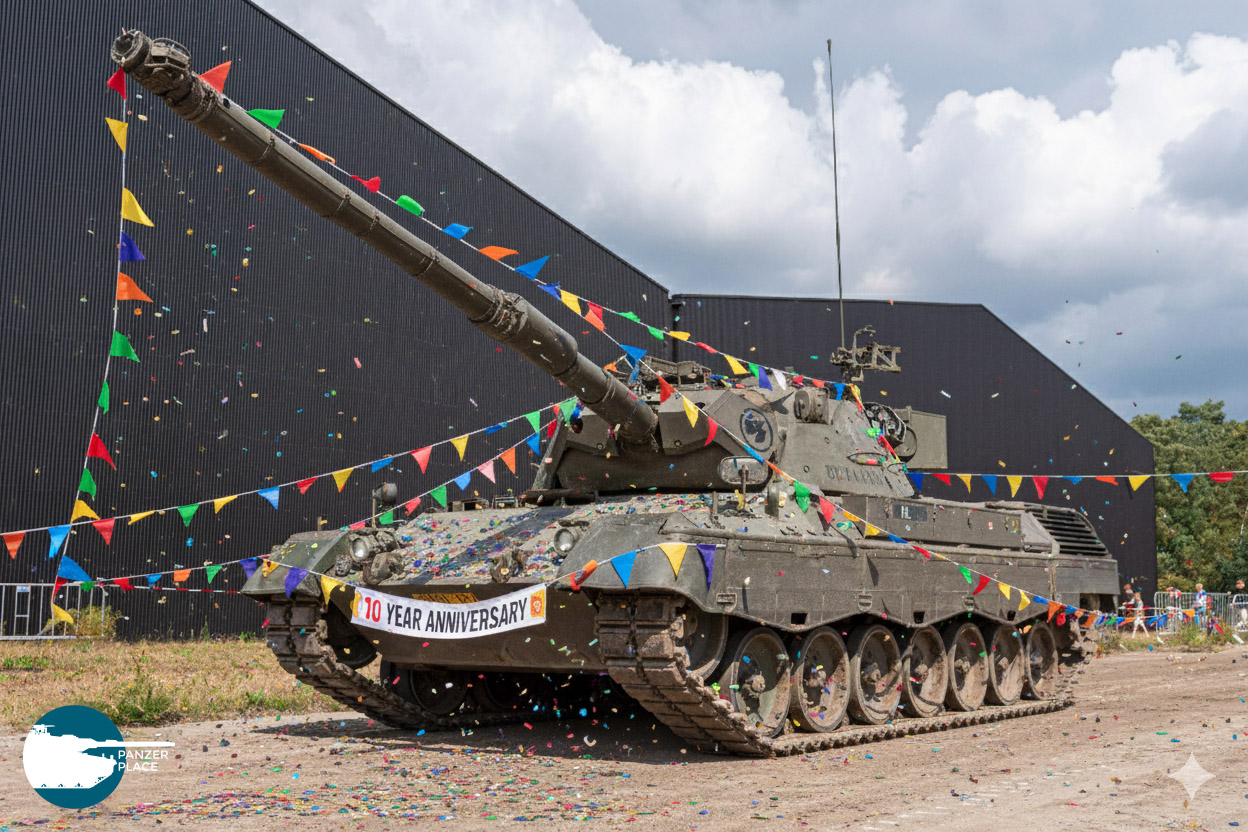Michael Fröhlich’s latest work dives into the history behind The other Tiger. In this 287 pages long volume the author explores the, what he considers, underexposed side of the Tiger history. Instead of focussing on Henschel’s winning design for the Tiger, the author chooses to give center stage to the Porsche’s Panzerkampfwagen Typ 101. The book, published by Motorbuch Verlag earlier this year in July 2019, is a logical continuation of Fröhlich’s earlier works which already explored the development of the Maus (2015), heavy tank designs carrying the 12.8 cm gun (2015) and super-heavy tank designs (2016) – all of which, but the first, only appeared in German1.
In Der andere Tiger, Fröhlich explores the design history of Porsche designs Typ 100 (Leopard), Typ 101 and Typ 180 as well as their derivatives (i.e. versions with different drive trains). Each main type has its own dedicated chapter chock-full of extracts of original war-time documents. Successive chapters deal with the technical aspects of the design such as the armament, engine and suspension. Like in his earlier work about the Maus, the last chapter shows the result of a field trip in search of any tangible remains of the constructions and places described in the chapters before. Among others, some interesting spots in Kummersdorf and Berka are shown together with period photographs and maps in a now-and-then fashion. In the back of the book we also find two guest contributions about the SSyms flatbed wagons as well as the use of electrical drive in modern AFVs.
According to the author the general attitude towards Porsche and his tank designs is condescending to say the least. Porsche is often described as a stubborn “nutty” professor trying to push through his own believes. The failure of his design is mostly blamed on the state-of-the-art petrol-electric drive while in fact this technique was all but new at the time. Fröhlich, as someone who by now has a firm grasp on the events that surround Porsche’s tank design escapades, strongly disagrees with the contemporary negative views of Porsche. His ideas resonate with those of Karl Pawlas, who published a series about Porsche Tiger in Waffen Revue magazine and states that the Henschel design for the Tiger was nothing less than a Heereswaffenamt–Tiger. The author relates that with Henschel’s design all dreams of the designers at Wa Prüf 6 (and thus the Heereswaffenamt) came true. Porsche’s design swum against the tide entirely, choosing compact suspension units instead of Schachtellaufwerk, air-cooled instead of water cooled engine, and electric drive instead of a conventional transmission. Nevertheless, Porsche’s close ties to Hitler and Reichsminister für Bewaffnung und Munition Todt offered his Tiger good prospects. This struck a nerve with the gentlemen of the Amt, who were rooting for their design at Henschel. Der andere Tiger equally tells the story of a remarkable tank design as it tells of sabotage and what maybe can be considered as foul play by the Heereswaffenamt, all of which ultimately would turn the tide in Henschel’s favour.

Some well known photos, such as these of Befehlspanzer Tiger (P) #003, are also portrayed
As usual, the author cites many primary source documents originating from the BAMA as well as a good number of well-regarded secondary sources. The story is told on the basis of the meeting minutes, correspondence between assembly firms and delivery plans. This enormous richness in information sometimes can be overwhelming: the various reports often contradict or undo each other, leaving one guessing what did happen at a given point in time. Due to the separation in chapters of each tank design, the book does not form a chronological whole. This can be confusing at times as certain events in the past are repeated or referenced to in other chapters. A remarkable amount of information on the turret development by Krupp is present. Jentz notes in his book DW to Tiger I that no surviving material about the turret from June till December 1941 survived the war. Fröhlich still manages to go into significantly more detail than disclosed in other published works on the Tiger, listing production forecasts, delivery dates and design amendments of the turrets.

Overview of some of the detailed schematics
Photographs are reproduced in good quality, some of which printed large-scale spanning two pages. Unfortunately, you will be hard-pressed to find many photos that have not been published in print or online before. One photo that certainly is unique is that of a Tiger I turret mounting the 8.8 cm L/71 gun on a dug-in VK 4502 (P) hull. For the tech savvy there is an ample amount of (design) drawings included too, many taken from Porsche archives or the D 656 Tiger manual series.
All in all, this thoroughly research book presents a fresh perspective on Porsche’s otherwise mostly neglected Tiger tanks. The book outlines a very complete history of the Porsche Tiger, starting from the design stages and up to its ultimate demise. It is definitely worth reading and recommended for any Panzer fan! I for one am already thrilled for the next book in line – a very fitting companion volume – titled Der Panzerjäger Ferdinand, due to be released in February 2020.
Der andere Tiger by Michael Fröhlich (German)
Publisher: Motorbuch Verlag, Stuttgart
Published: July 2019
ISBN: 978-3613042131
Pages: 287
Format: Hardcover
Price: €29,90, $33 (US)
Footnotes
- ”German Superheavy Panzer Projects of World War II” is due to be published in English by Pomegranate Communications in November 2019[↩]







Leave a Reply